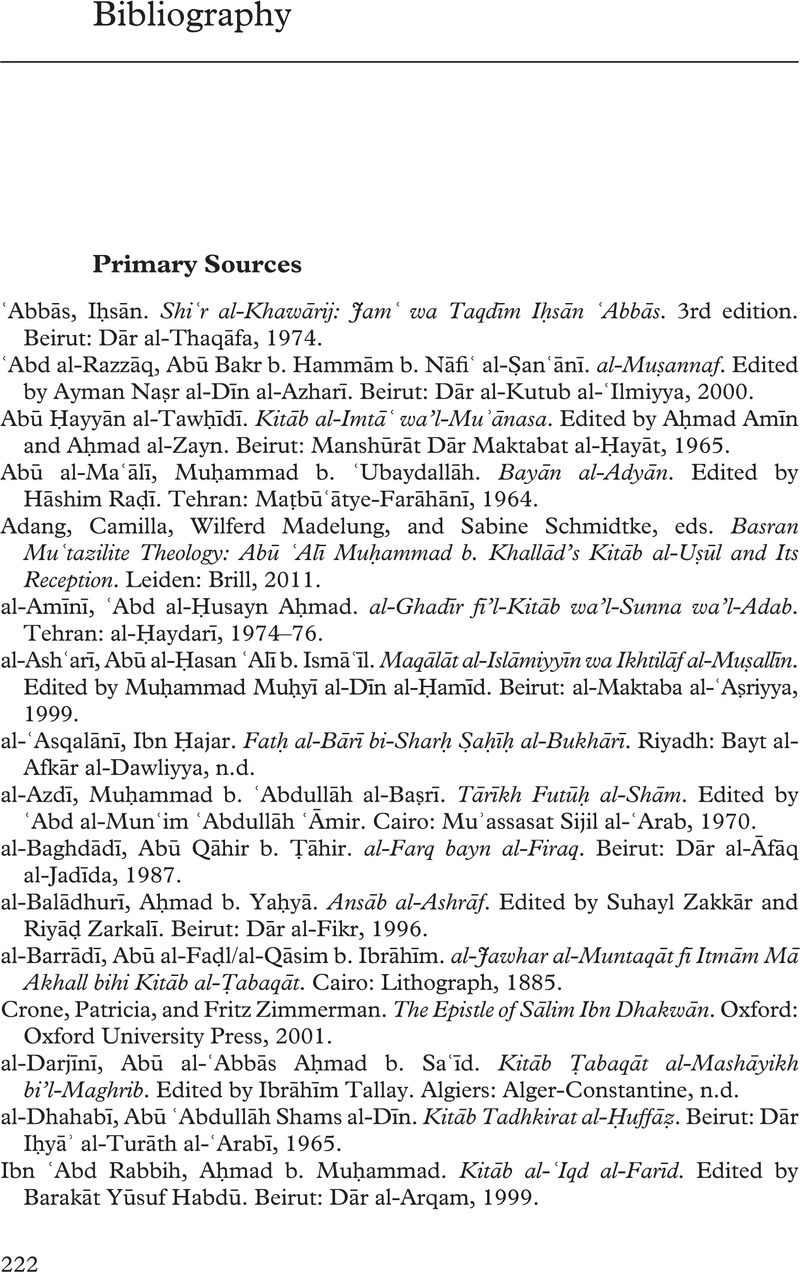Book contents
- Sectarianism in Islam
- Themes in Islamic History
- Sectarianism in Islam
- Copyright page
- Dedication
- Contents
- Figures and Maps
- Preface
- Note on Transliteration, Dates, and Qurʾanic Citations
- 1 Introduction
- 2 History, Sects, and Schools
- 3 Protest and Piety
- 4 Devotion to the Family of the Prophet
- 5 Muslim Schools of Thought
- 6 Emulating the Prophet and Cleaving to the Community
- 7 Sectarian Ambiguities, Relations, and Definitions
- 8 Conclusions
- Glossary
- Bibliography
- Index
- References
Bibliography
Published online by Cambridge University Press: 10 November 2022
- Sectarianism in Islam
- Themes in Islamic History
- Sectarianism in Islam
- Copyright page
- Dedication
- Contents
- Figures and Maps
- Preface
- Note on Transliteration, Dates, and Qurʾanic Citations
- 1 Introduction
- 2 History, Sects, and Schools
- 3 Protest and Piety
- 4 Devotion to the Family of the Prophet
- 5 Muslim Schools of Thought
- 6 Emulating the Prophet and Cleaving to the Community
- 7 Sectarian Ambiguities, Relations, and Definitions
- 8 Conclusions
- Glossary
- Bibliography
- Index
- References
Summary

- Type
- Chapter
- Information
- Sectarianism in IslamThe <EM>Umma</EM> Divided, pp. 222 - 232Publisher: Cambridge University PressPrint publication year: 2022



